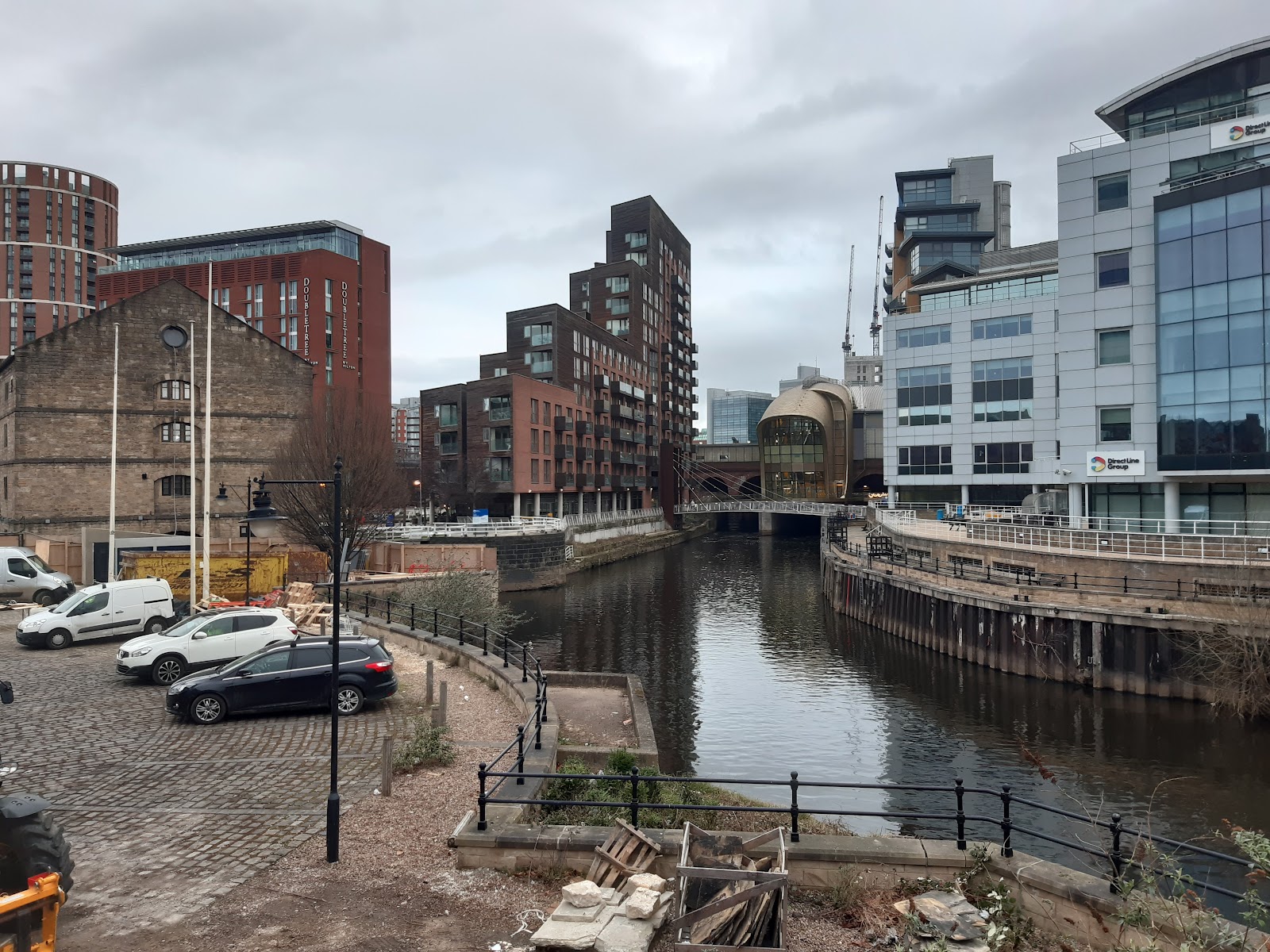Leeds
This weekend I was in Leeds. It is not a city I know well, I visited four years ago for a course, and one year ago to look at the university, but this was my first proper look at the city.
Leeds in on the River Aire, and at the eastern end of the Leeds-Liverpool canal. The station is just north of where the canal starts, and the city centre is north from there. It looks to have a load of investment, with numerous new tower blocks being built, and roads dug up all over the place, though there are still some more run down areas.
A good place to start, then, is where the canal joins the river. This image is the River Aire, but on the left is the outflow from the canal. At the back, the river flows out from under the station.
Just near to where I took that photo are these bizarre structures. I did wonder if they were some kind of art installation, but apparently they are designed to reduce wind speeds around the very tall Bridgewater Place, the building just visible on the right, which had caused a fatality when a lorry was blown over.
The area around the end of the canal has seen a lot of redevelopment in recent years, including the addition of a Spinosaurus. The arches at the back support the station, and are home to an excellent pub called The Hop, which is very popular with Leeds fans on their way to Elland Road.
The Spinosaurus was one of twelve dinosaurs across Leeds last summer that were originally animated. As far I know, this is the only one left (and as of July, it has also been removed).
A view of the canal from a rather more sunny day in 2019...
The station has a thirties vibe. This is the side entrance. The tall building behind it is the Queens Hotel and also dates from ca. 1938.
Just north of the station is the Scarborough Hotel. Named for Henry Scarborough, rather than the town, it may date from about 1900, and what we see today is the extension to a larger establishment. It is interesting that it was connected to Ind Coope, who were based in Romford, but who merged with Tetley's, based in Leeds, in 1961.
Heading north from the station, you can choose to take the more westerly route with the sights or the easterly route with the shops. The westerly route takes us past Park Square.
It is a short way from there to the impressive town hall, which clearly dates from when the city was competing with other cities to impress - and especially with Liverpool I think. This image has the art gallery on the right, with the Town Hall on the left and more distant.
The town hall is on the north side of the main east-west road, called The Headrow, and according to Wiki is seen on maps from as long ago as 1560. Its name is due to it, at one time, being the head, or northern boundary, of the city.
Looking the other way is the Civic Hall, which has two strange projections, one each side, supporting a clock, all in gold.
On the east side of the square is this curious building. It is a pub called the Cuthbert Brodrick, named after the guy who designed the Town Hall, as well as the Corn Exchange and the Grand Hotel in Scarborough.
Slightly set back from the square, and right of the pub is the Leeds City Museum
For Anglicans, the Diocese of Leeds is unique in having three cathedrals... but none are in Leeds - they are in Bradford, Ripon and Wakefield. But there is a minster to the east.
Heading north again is Queen Square.
Beyond that, and across the A64(M), and you are into the high-rise flats and derelicts pubs...
Time to head south again!
The rather older St John The Evangelist's Church. This is the oldest church in Leeds, dating from 1631, though has not been in use as a church since 1975. It is still maintained as a Grade 1 listed building.
The Parkside Tavern is just a short way down the road. Not quite as old, and I think mock Tudor rather than Tudor, this old pub is well worth a visit.The Opera House is wonderfully gothic, and opened in 1878.
Across the Headrow, and we find the County Arcade, built in 1898.
In 1990 it was merged into other arcades, and Queen Victoria Street, which was pedestrianised and covered over, to form the Victoria Quarter. This is how Queen Victoria Street looks today.
And the very impressive interior of County Arcade.
Further south, and a little to the east is Leeds City Markets.
And beyond that, the Corn Exchange.The interior...
Stepping back west, and looking north, this is the Briggate Minerva, Briggate being the name of the street. The statue was sculpted in 2013, and the cloth harks back to the City's industrial roots.
And that brings us pretty much back to where we started.

































Comments
Post a Comment